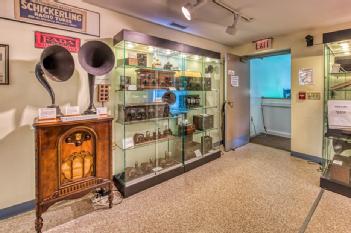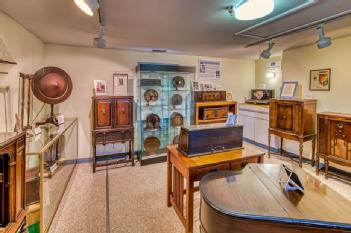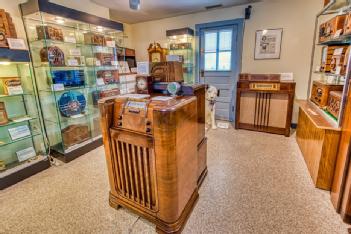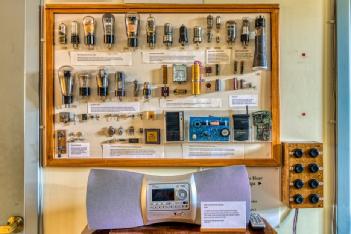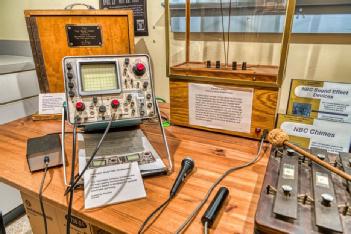
 |
NCRTV - The National Capital Radio & Television Museum |
20716 Bowie, MD, United States of America (USA) (Maryland) |
|
| Address |
2608 Mitchellville Road
|
| Floor area | unfortunately not known yet |
Radio and Kommunication in general
- TV and image recording
- Tubes/Valves / Semiconductors
- Radios (Broadcast receivers)
- Transmitting and Studio technique
- Morse technology
- Measuring Instruments, Lab Equipment
|
Opening times
|
Friday: 9am - 4pm; Saturday, Sunday: 12pm - 4pm; other times by appointment. | ||||
|
Status from 02/2024
|
Adults: $7; seniors, students, and Bowie residents: $5 | ||||
| Contact |
|
||||
| Homepage | ncrtv.org | ||||
| Location / Directions |
Bowie is a city in Prince George's County, Maryland, United States. Bowie is served by several significant highways. The most prominent of these is Interstate 595/U.S. Route 50, the John Hanson Highway, which follows an east–west route through the city. Via I-595/US 50, Bowie has direct connections westward to Washington, D.C. and eastward to Annapolis and the Eastern Shore of Maryland. U.S. Route 301 and Maryland Route 3 skim the eastern edge of the city, providing connections southward to Waldorf and La Plata and northward to Baltimore. Other state highways serving the city include Maryland Route 197, Maryland Route 214, Maryland Route 450 and Maryland Route 564. |
Some example model pages for sets you can see there:
Some example tube pages for sets you can see there:
| Description | THE NATIONAL CAPITAL RADIO & TELEVISION MUSEUM in Bowie is located in a 1906 storekeeper’s house, the National Capital Radio and Television Museum explores broadcast history from the earliest days of wireless telegraph to the development of television. Wikipedia: Gallery 1: Wireless Beginnings: Focus on invention of "wireless telegraphy" (or simply wireless) to describe sending Morse Code. Gallery 2: Birth of Broadcasting: From the first limited scheduled radio broadcasts (often listened to with home built crystal radios) through to a few years later when radio had become a country-wide phenomenon. Gallery 3: Radio Comes of Age: Radio becomes a fixture in many American households and the Federal Communication Commission is formed to regulate radio stations. Gallery 4: Radio’s Golden Age: With improving technology, radios became less expensive and smaller. Radio also became a main source of family entertainment. Gallery 5: Post-War Radio: With radio still going strong, television introduced a new visual medium. Gallery 6: Rise of Television: Twenty years of TV design innovation, including different signal reception/ display ideas Gallery 7: How it all Works: Sound effects used for early radio brought to life. Special collections The Museum has a number of special collections, such as a collection of early ham equipment, World War I equipment, radio station studio equipment, it’s now on display. From time to time such equipment will be featured in special temporary exhibits. The Museum also has an extensive library but much of it is also stored offsite. Those wishing to do historical research should contact the curator. |
[dsp_museum_detail.cfm]
| Data Compliance | More Information |
 ncrtv.org
ncrtv.org 

